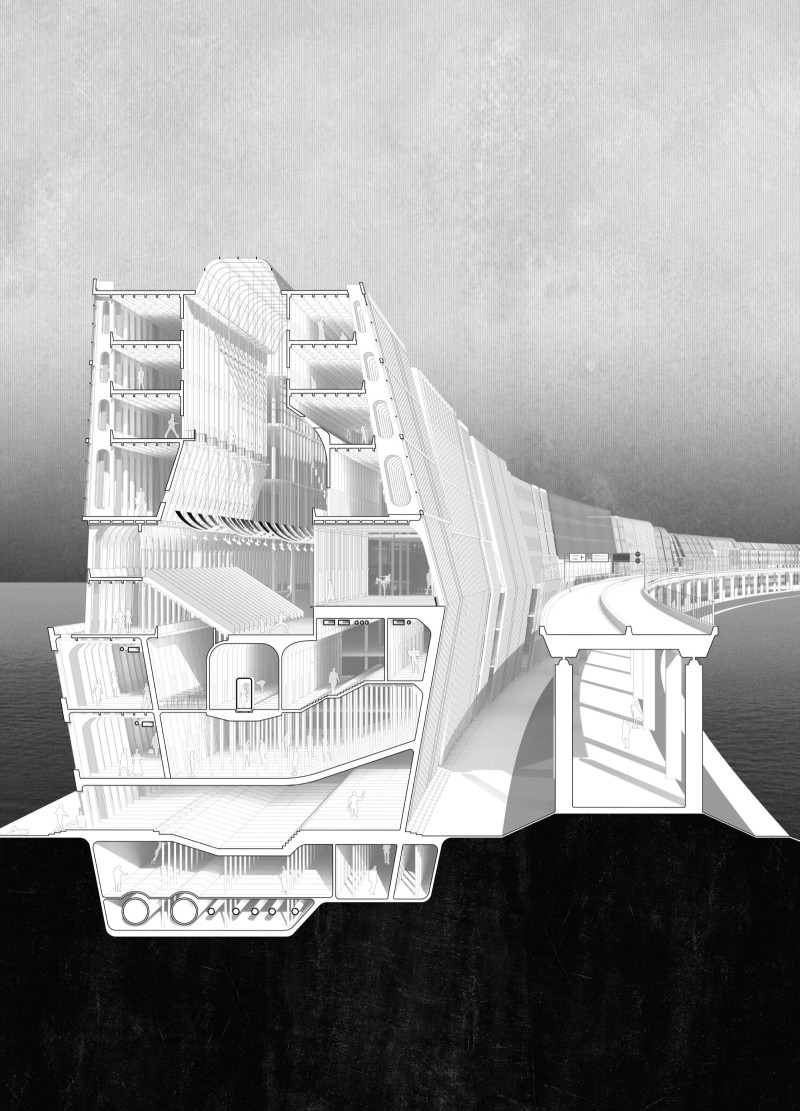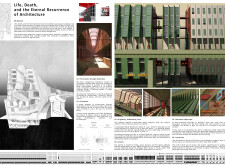5 key facts about this project
**Overview**
Located in Tokyo, Japan, the project examines the relationship between historical preservation and contemporary construction techniques. It aims to foster an ongoing dialogue between past architectural practices and modern innovative methods. By prioritizing a design philosophy that integrates elements of historical significance with new structural forms, the project seeks to reflect the evolving nature of architecture within an urban context.
**Cyclic Nature and Replicative Strategy**
The design conceptualizes architecture as an ongoing cycle in which each new structure honors and reinterprets its predecessors. The horizontal skyscraper form symbolizes this relationship, integrating various historical architectural styles into a cohesive narrative. This replicative strategy values architectural copies and reinterpretations as essential practices in preserving the historical continuum while allowing for contemporary expression.
**Material Selection and Sustainability**
The project employs an assorted range of materials purposefully chosen to enhance both the integrity and aesthetic quality of the design. Concrete provides durability; glass fosters transparency and natural light; steel introduces structural flexibility; and wood pays homage to traditional Japanese craftsmanship. These materials support the dual aims of innovation and sustainability, potentially incorporating energy-efficient systems and green roofs to create a functional yet historically resonant environment.



















































